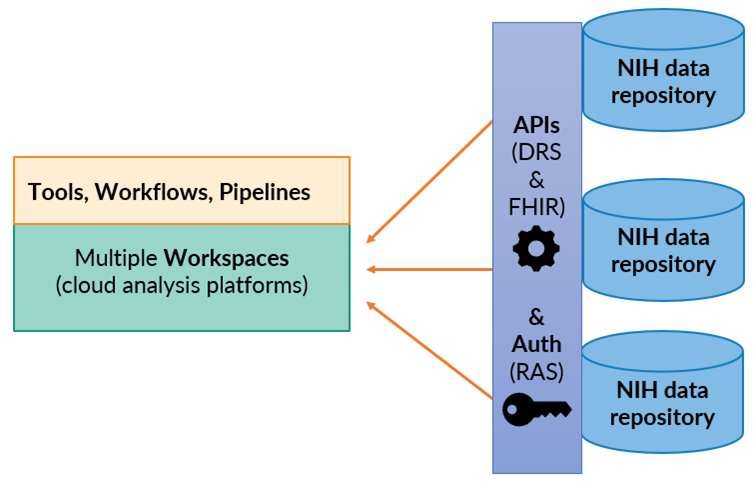Recent News
Major Milestone Achieved in NIH Ecosystem:
Full Interoperability Between Velsera's CAVATICA and NCBI's dbGaP Data on SRA
We are thrilled to announce a significant achievement in ongoing efforts at the NIH to enhance data accessibility and collaboration. Velsera's CAVATICA is now interoperable with the database of Genotypes and Phenotypes (dbGaP), part of the Sequence Read Archive (SRA) repository managed by the NIH National Center for Biotechnology Information (NCBI). This milestone marks a pivotal advancement in our interoperability initiatives.
Background of the Integration
This project originated as part of NCPI, involving a collaborative effort among NCBI, the NIH Researcher Auth Service (RAS) team, and NICHD's Kids First. The goal was to enable integration of Kids First and Undiagnosed Diseases Network (UDN) data in the cloud, with the work gaining momentum as part of the Common Fund Data Ecosystem. The detailed documentation of this use case can be accessed here.
The NCBI dbGaP/SRA and NIH RAS teams integrated RAS for GA4GH Data Repository Service (DRS) authorization to control access to dbGaP data, unique within NCPI as most other DRS services rely on allowlists for data retrieval. CAVATICA used this integration of RAS with DRS to enable interoperability with dbGaP data, making available public SRA sequences.
What This Means for Researchers
The integration between Velsera's CAVATICA and NCBI's dbGaP/SRA enables approved researchers to combine and co-analyze genomic dbGaP data with additional data from various cloud-based NIH repositories that are now interoperable with CAVATICA such as the INCLUDE Data Hub and NICHD's Kids First Data Resource Center. Eliminating the need to download large datasets minimizes cost and resource burdens.

Future Implications
This integration of these two interoperability standards, RAS and DRS, sets a precedent for similar integrations with other cloud analysis platforms/workspaces and data repositories for more accessible research environments. We look forward to the continued evolution of this ecosystem and the new opportunities it will bring to the global research community.
Stay tuned for further updates on our progress in making genomic data more accessible and actionable for researchers around the world. Please feel free to contact us for more detailed information on this milestone and what it means for your research.